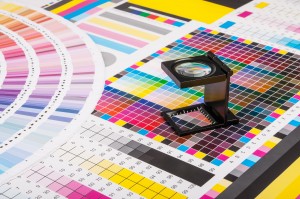The Basic Principles Of 24??media
The Basic Principles Of 24??media
Blog Article
Top Guidelines Of 24??media
Table of ContentsThe 24??media IdeasThe Main Principles Of 24??media 6 Simple Techniques For 24??mediaAll about 24??media24??media Can Be Fun For Everyone
Developments in print technology are changing the communications playing field when it involves quality, price and advanced abilities. Offset printing and digital printing are the major processes through which print tasks are taken on both using four-color printing techniques. Each alternative has its benefits, offering different techniques to fulfill the needs of diverse production tasks.
Commonly, this has actually been the most constant strategy for exactly maintaining color suits, making it ideal for print runs that just need static printing such as pre-printed types, pamphlets, leaflets, business cards, and bulk postcard mailings. Due to the fixed nature of litho printing, it is not ideal for variable print pieces that will certainly be sent by mail to private recipients such as declarations, letters, and individualized postcards.
The Main Principles Of 24??media
The most current innovations in print modern technology are aiding to bring numerous of offset's advantages right into the digital printing world truly changing the face of modern-day printing! There are some vital differences between Offset Printing and Digital Printing.
Today's electronic print tools is amongst one of the most advanced on the marketplace. Below are a few of the biggest benefits of making use of digital printing: control the digital print space, with full-color printing finished in one process and flawlessly published straight from a print data. Without a lengthy set up process, the calibration time of a details job is reduced, adding to quicker print time and overall shipment.
The inkjet printing process has actually assisted to change the industry in addition to the high quality and rate of the output. The most recent inkjet modern technology can publish on traditional countered supplies with plain, silk, and glossy finishes. Top quality electronic print paired with software-managed color administration practices includes maximum value to print items and makes manufacturing procedures more trustworthy than countered.
The Facts About 24??media Revealed
(https://blogfreely.net/za24media/24krmedia-your-one-stop-shop-for-digital-printing-excellence)
Eco-friendly and eco-friendly inks and toners are also available for more lasting printing. Digital print also eliminates the demand to wash plates or coverings with harmful chemicals at the end of the printing process.
Variable data aids companies reach their precise consumers and audience with uniquely-created and customized content. As innovation improves, the top quality of electronic printing has ended up being second-to-none, with better detail, color match abilities and general accuracy. Without the demand to clean plates or use excess ink, electronic printing is likewise much less inefficient and usually more eco-friendly.
Conventional printing approaches, such here as offset lithography ("offset") and flexography ("flexo"), involve multiple make-ready actions to move an initial picture to a substratum. These techniques need the production of a series of plates placed on a cylinder to transfer ink that creates the wanted photo when incorporated on paperboard and various other product packaging products. Stickers.
The Ultimate Guide To 24??media
While electronic printing is a viable alternative for the majority of short-run print tasksunique occasions, prototyping, or various other considerationsits contemporary capacities actually receive fast turn-arounds. Having the ability to customize product packaging with variable information printing has opened up new possibilities for you to engage with your consumers in more tailored methods. Digital printing, with fewer relocating pieces, is much more nimble than offset hereof.
Reduced set-up time saves cash on the front end. And because these are not huge mass orders, smaller sized businesses can pay for to publish without having to meet the higher and a lot more expensive print thresholds of typical printing.
Be sure you collaborate with a printing and product packaging partner who has the right certifications. While eleventh-hour printing and personalization are a substantial benefit, digital may not always be the very best method for you. Offset printing has the benefit of cost-effectiveness with big print runs, specifically those with sophisticated attractive effects and specialized finishings.

Not known Details About 24??media
The positive plate, with its smooth surface, attracts oil-based inks and repels water. In contrast, the unfavorable plate, with its harsh texture, takes in water and pushes back oil. Rubber rollers are after that made use of to move the image from the plate to the corrugated surface.
Corrugated paper can often verify to be a tough surface area to publish on, yet Litho prints to a separate surface and is then laminated to it, making it easy to print high-quality images. It can be extremely consistent, also for lengthy runs. As a matter of fact, the much more you print, the less costly the expenses come to be for Litho.
What Litho does not give you is specifically what Digital does, personalization. Costly established up Longer turnaround No Variable Data Printing Smaller sized shade gamut, colors can be much less brilliant Digital printing is the process of printing digital images straight onto the corrugated substratum utilizing a single-pass, direct-to-corrugate strategy.
Report this page